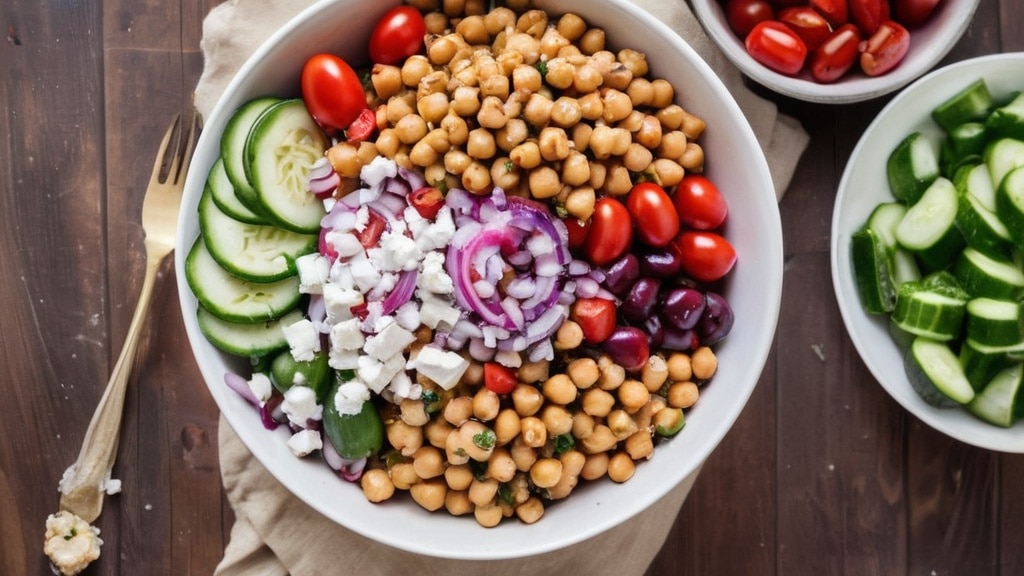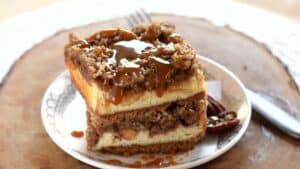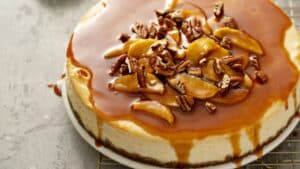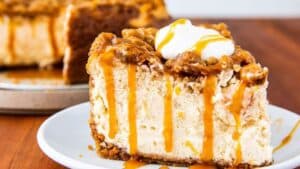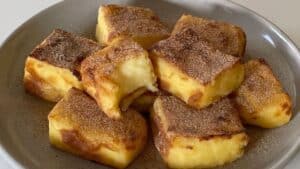Refreshing Mediterranean Chickpea Salad
You ever taste something so fresh it almost slaps you in the face with clarity? That’s what a proper Mediterranean chickpea salad does. Not some limp mix with a squirt of lemon and a prayer. I’m talking real food a salad that stands up straight and makes a grown chef nod in approval.
This isn’t a trend. It’s a staple across cultures hugging the Med. From souks in Morocco to Greek kitchens with painted shutters, this dish is rooted in centuries of bold, plant-forward eating. And here’s the thing it’s not just good, it’s built for the future of food.
Today, we’re diving deep. Chickpeas aren’t just cute little legumes. This salad is a system. It’s flavor math. Texture science. Protein politics.
Let’s dig into why every serious kitchen professional or otherwise needs a killer chickpea salad in their back pocket.
What Even Is a Mediterranean Chickpea Salad?
Not your grocery deli tub, that’s for damn sure.
At its core, it’s a mix of chickpeas, fresh veggies, herbs, olive oil, acid, and whatever punchy accents your region or roots insist on. But done right, it’s more than the sum of its parts.
We’re talkin’:
- Cooked or canned garbanzo beans
- Chopped cucumbers, tomatoes, onions, peppers
- Fresh parsley, mint, or dill
- A sharp vinaigrette often lemon-heavy
- Optionals: feta, olives, capers, sumac, tahini drizzle
There’s no true version. That’s what makes it bulletproof. You adapt it to the plate, the season, the service. Vegan? Easy. Gluten-free? Always was. Bulk-prep friendly? Absolutely.
I’ve served it to Michelin inspectors in a mezze tasting and also to drunk cousins at 2am with grilled flatbread. It slaps either way.
Chickpeas: The Protein Workhorse

Let’s stop sleeping on legumes. Chickpeas are nutritional tanks.
Per 1 cup cooked (that’s ~164g), you get:
- 15g protein
- 13g dietary fiber
- 45g complex carbs
- Low glycemic index (~28–36)
- Zero cholesterol, zero gluten
And listen, chefs protein matters. If you’re running a plant-forward menu and you’re not leaning into legumes, you’re leaking credibility.
Plus, chickpeas are sustainable as hell. They fix nitrogen in the soil, use less water than meat or dairy, and store for months dried. Talk about a pandemic-proof pantry hero.
Oh, and they cost pennies. Try buying 15g of protein for less.
Flavor Geometry: Build It Like a Chef
A good salad is never just a toss. It’s a flavor structure.
Here’s how I balance my base:
The Base (Bulk & Bite)
- Chickpeas, drained and rinsed. Or pressure-cooked if you’ve got time way creamier.
- Maybe a scoop of farro or bulgur if you want grains involved.
The Crunch
- Persian cucumbers, diced. Not watery American ones. No offense.
- Bell peppers, raw, small dice. Red or yellow for sweetness.
The Sweet Acid
- Cherry tomatoes, halved. Let ’em sit in salt 5 mins brings out the juice.
- Red onion or shallots, thinly shaved. Soaked in vinegar if you don’t want them to bite.
The Fat & Funk
- Kalamata olives, pitted and roughly chopped.
- Feta cheese, crumbled. Or skip it for vegan prep use smoked almonds instead.
The Fresh Hit
- Italian parsley, flat-leaf only. Curly parsley is for garnish trays.
- Mint, chiffonade. Don’t skip it brightens the whole bowl.
- Optional: sumac, za’atar, lemon zest, or even harissa for heat.
Then you hit it with a proper vinaigrette.
The Dressing: Liquid Gold, Not an Afterthought
Please, for the love of tahini, stop eyeballing dressing ratios. We’re not animals.
Here’s a tested base:
- ¼ cup extra virgin olive oil (go fruity, not grassy)
- 3 tbsp lemon juice, fresh only
- 1 clove garlic, minced to a paste
- ½ tsp Dijon mustard (emulsifier)
- Salt and black pepper, to taste
- Optional: 1 tsp honey if tomatoes aren’t sweet
Shake it like it owes you money. Pour just enough to coat don’t drown it. It’s a salad, not soup.
Let it sit 20–30 mins if you can. That’s when the real magic happens.
Professional Kitchen Applications
In restaurant settings, this salad is a service weapon.
- Prep in advance: Holds beautifully for 24–36 hours. Improves, even.
- Cross-utilization: Works as a side, a base for protein (think: salmon, tofu, halloumi), or part of a mezze plate.
- Low waste: Uses odds and ends of herbs, soft tomatoes, leftover lemon halves.
- Appeals to every diet: Vegan, GF, DF just tweak accordingly.
It’s also cost-effective and high margin. A 6oz portion costs maybe $0.85 in bulk and sells for $6–9 at most cafés. That’s not food, that’s business.
Common Mistakes (That Even Pros Make)
Let’s keep it real. Most versions out there are… boring. Why?
- Under-seasoned chickpeas: They need salt. They need fat. They need acid. Raw chickpeas taste like nothing.
- Bad oil: You can taste old or cheap EVOO. Especially in cold dishes.
- Skipping the herbs: No herbs = no heartbeat. You want it to feel alive.
- Over-dressed: The sad, soggy aftermath of oil-drenched greens haunts many prep fridges.
- No texture variety: Every bite shouldn’t be soft. Use toasted seeds or something with snap.
You’re not building a salad. You’re curating an experience in a bowl. That’s the mindset shift.
Variations Worth Exploring
Tunisian-Style
Add harissa paste, preserved lemon, and fresh coriander. Maybe a little cumin and caraway in the dressing.
Greek-Style
Cram in more feta, oregano, red wine vinegar instead of lemon, and sliced green pepper.
Levantine Lean
Tahini-lemon dressing, pomegranate seeds, and chopped pickled turnips. Unreal with grilled meats.
California Brunch Vibe
Avocado chunks, sweet corn, and microgreens. Add a poached egg if you’re bold.
This dish has legs. You can spin it five different ways for five different menu slots.
Storage, Shelf Life & Batch Cooking

Here’s the professional breakdown:
- Shelf life: 3 days max in airtight, refrigerated. After that, tomatoes start to collapse.
- Don’t freeze it: It ruins the texture. Chickpeas go mushy, herbs turn black.
- Mix dressing separately if prepping for service. Toss just before plating.
For batch prep: Scale to a 2kg chickpea base. Use a 10:1:1 ratio (chickpeas:veggies:herbs). Dressing goes on at ~75ml per kg, adjusted to taste.
Pro tip? Add a squeeze of fresh lemon or vinegar just before plating. Wakes the whole thing back up.
Chickpea Salad in 2025 Menus and Beyond
Plant-based isn’t a trend anymore it’s a reality.
Reports from The Good Food Institute and Plant Based Foods Association show a 20%+ increase in plant-based protein demand globally since 2020. Menus need to reflect that.
Mediterranean diets remain the most consistently recommended by health experts WHO, Harvard School of Public Health, you name it. This salad fits square in the crosshairs of that food philosophy: simple, unprocessed, vibrant.
Also, with labor shortages in kitchens? Dishes like this are gold. Quick to teach, fast to plate, easy to scale. One station, one bowl, ten uses.
Final Word: What Makes This Salad Stick
A refreshing Mediterranean chickpea salad isn’t just lunch. It’s how you tell your guests you know what you’re doing. That you get flavor, balance, sourcing, health, and culture. It travels from mezze plate to modern bowl. From rustic to refined.
Treat it with the same respect you’d treat a steak tartare or beurre blanc. Learn its rules, then break them with style.
Add it to your menu, your fridge, your potluck rotation whatever. Just do it right.
Because when a chickpea salad is good, it’s not just “healthy.”
It’s straight-up perfect.
Would you like a printable prep sheet or pro kitchen batch recipe for this?
